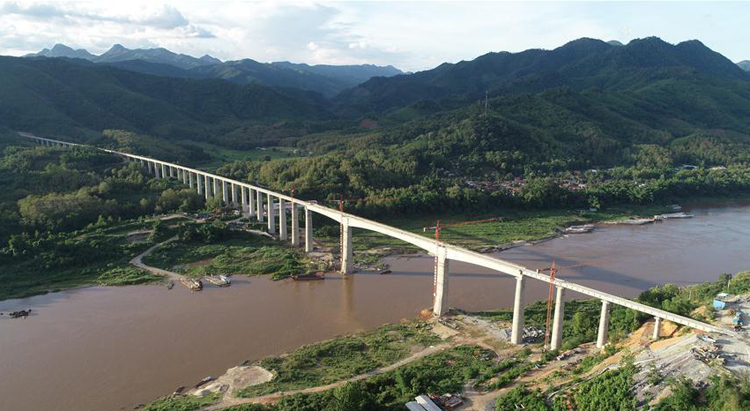September, 2, 2020

By Prof. Samitha Hettige ©
There is discussion on the Millennium Challenges Cooperation (MCC) agreement once again in Sri Lanka. One feature in the MCC is developing transportation facilities to improve connectivity in Sri Lanka. Laos sometimes referred to as the land of million elephants is bordering the Peoples Republic of China. Transport facilities in Laos need development but there is no sound of MCC. Laos is connected with PRC for centuries and it is becoming much closer with the Belt and Road Initiative (BRI). Kunming-Vientiane railway constructed to link China and Laos is on schedule. According the engineers more than 90% of the bridges, 96% of the tunnels within Chinese territory is completed by end August 2020 with an investment of more than USD 01 billion. Since inception in 2016 on any given day on average more than 25,000 humans are engaged in the construction and it is expected to be completed by December 2021. The only set back was COVID 19 but work is progressing. The PRC - Laos Railway comes through the mountains in northern Laos along the border and will run more than 400 km from the border in the north to Vientiane, capital of Laos. Trains are expected to travel at a speed of 160 km per hour. The Mekong River starts in China and runs through six countries (approx 4350 km) before reaching the ocean. Mekong for centuries has been a source of transport between the two countries but the railroad is expected to serve more people faster.
Last year Sri Lanka added the Matara – Beliatta section of its railroad network to the main grid. It was constructed with support from the PRC and expected to be extended to Uva province. Transport in any form will expose communities to development. It is believed that the British colonial rulers were determined not to develop Uva since it was there Sri Lankans started their revolts against the colonial rule. Hence, the British stopped the railroad in Matara isolating the population of Uva. We must ensure that our railroad reaches Uva fast. According to historical evidences it was the Chinese imperial Navy that gave us the idea of the southern expressway in early 1400s AD. 600 years later Chinese engineers undertook the feasibility study for the Colombo light rail project in 2017. It is estimated to cost USD 06 billion. According to reports Japan which wanted to offer an alternative to BRI has agreed to offer more than USD 01 billion as a loan for the light rail project with a 40-year repayment period in 2017. This project is expected to reduce traffic congestion in Colombo. It will also encourage people to increase use of public transport. Ultimately, we will be able to enjoy an emission-free travel experience. We reconstructed the northern railway with Indian credit line support after the war ended. Some were of the view that building roads and railroads will not resolve the problem in Sri Lanka. People of the north were grateful to the Indian government for the railroad and they do not talk of an Indian debt trap. The challenge is to complete these projects fast and expedite development and people connectivity. That will take us to the new era.
(The writer is an Academic and a Broadcaster. Views expressed are personal and may not necessarily be the views of his affiliations.)
Video Story